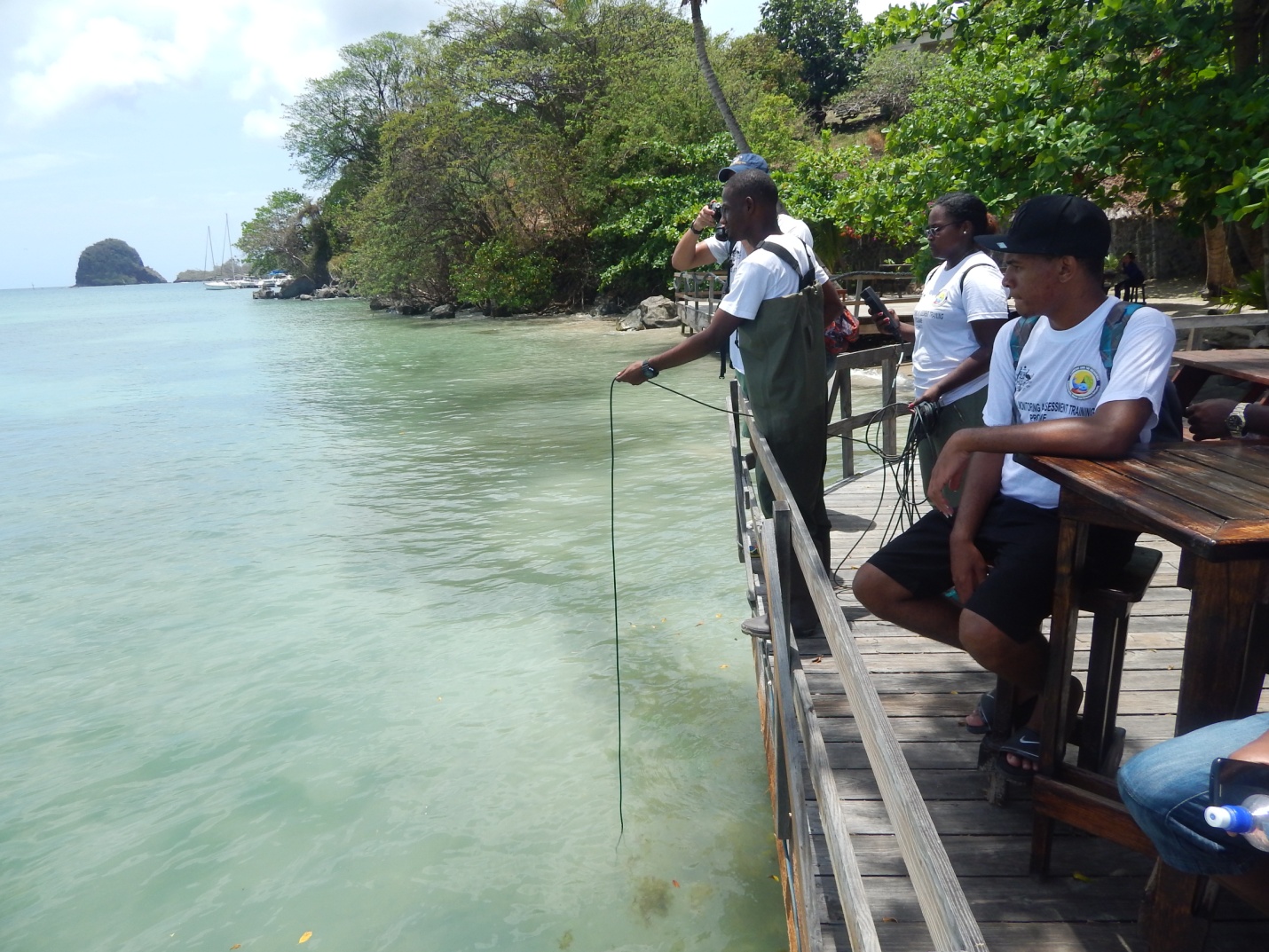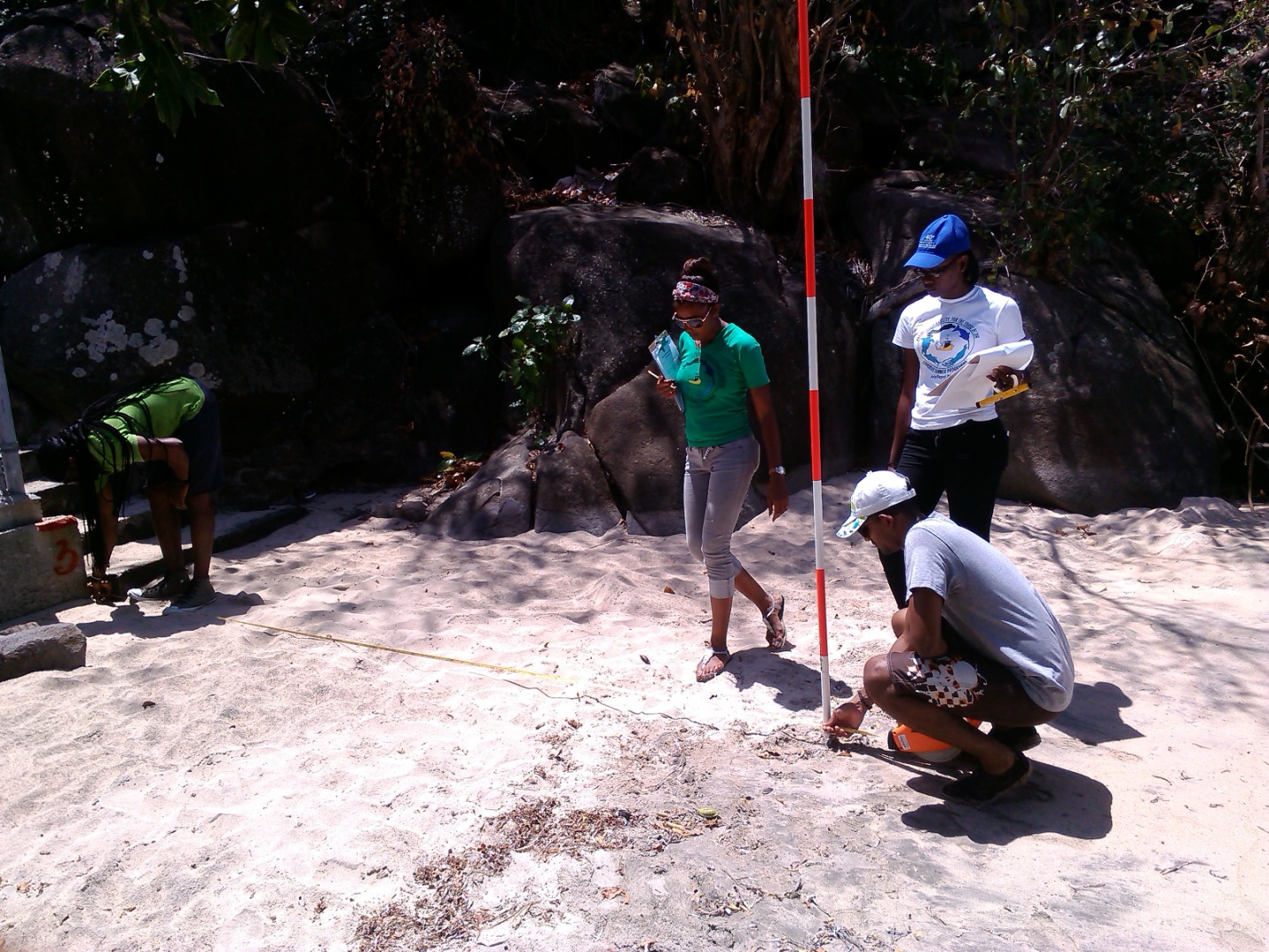In St. Vincent and the Grenadines, we are surrounded by natural, cultural and historic sites including one our greatest assets, our beaches. At National Parks, Rivers and Beaches Authority (NPRBA), our principle aim is to protect and maintain biological diversity, ecological systems, and natural, cultural and aesthetic resources. Through the implementation of biophysical monitoring programmes in collaboration with our stakeholders and partner agencies, the Authority will continue to embark on the protection of biodiversity, monitor our beaches, recreational waters, and aquatic ecosystems used for industry and recreation.
In St. Vincent and the Grenadines Climate Change events have already significantly impacted hotels, businesses and residents located along the coast as a result of sea level rise, storm surges, and hurricanes and flooding. Beaches have been encroaching in coastal area resources thus resulting in a high level of beach erosion. Annual reductions in the contribution of tourism to SVG’s GDP as a result of the reduced amenity value from beach loss are estimated to be between US $46 million by 2050 to US $174 million by 2080 for a mid-range SLR scenario CARISAVE Climate Change Risk Profile for SVG, 2012).
Ecosystem-based stressors are also present. Critical marine habitat has been impacted by both climate change impact such as high sea surface temperatures, sea level rise, intense hurricanes and storm water runoff and anthropogenic causes such as pollution. The loss of coral reef and the migration of invasive species such as the lion fish has also threaten the fisheries in St. Vincent and the Grenadines.
The coastal areas of SVG are home to mangroves, Elkhorn corals, many marine species and heritage sites. The south coast of SVG is also well known for tourism as many hotels are located here as well as fisheries (fish market). It is also the only area on mainland St. Vincent where white sands can be found. Research and observation has shown that over the last decade, the loss of biodiversity is significantly high (Baldwin 2014). Areas where rich coral reefs are now highly impacted in many areas. The 2016 SVG National Coral Reef Report Card also draws attention to these issues such as sedimentation that is affecting coral reefs, land base sources of pollution and levels of fish biomass. Based on the Analysis of Baseline Coastal Dynamics Report (UWI St. Augustine, 2014), the rate of beach erosion in this area is also high as a result of wave energy, storm surges and sea level. This is exacerbated by jetties constructed using impermeable base that result in build up on one side and severe coastal erosion on the other side of such structures on Villa Beach (UWI St. Augustine, 2014).The Socio-Economic Assessment Survey Study of the SCMCA showed that respondents surveyed recognized the critical importance of the SCMCA as an ecological unit to their overall socio-economic well-being. This recognition has bred a collective desire for a cleaner, healthier environment which is resilient and robust to provide the ecosystem goods and services to support sustainable livelihoods.
Water Quality Monitoring Programme
The NPRBA Water Quality Programme is a leading source of water quality data and knowledge for development of policies and management strategies to improve and protect our water resources. Since the inception of the National Parks, Rivers and Beaches Authority (NPRBA) Water Quality Monitoring Programme in 2013, we have been able assist in updating the Environmental Management (Pollution) Regulations, 2009 and the Environmental Protection (Effluent Limitation) regulations, 2009 and informed the preparation of a National Water Quality Standard for St. Vincent and the Grenadines.
 The NPRBA Water quality monitoring programme has in the past also informed a major project proposal which includes inter alia, the implementation of abatement measures such as the installation of grey water treatment structures at Villa Beach under the South Coast Marine and Coastal Rehabilitation Adaptation Project to Improve Ecosystem Health and Build Resilience to Climate Change (SCRPCC) Project. The programme has also fostered the facilitation of environmental awareness and monitoring exercises with schools and other stakeholders.
The NPRBA Water quality monitoring programme has in the past also informed a major project proposal which includes inter alia, the implementation of abatement measures such as the installation of grey water treatment structures at Villa Beach under the South Coast Marine and Coastal Rehabilitation Adaptation Project to Improve Ecosystem Health and Build Resilience to Climate Change (SCRPCC) Project. The programme has also fostered the facilitation of environmental awareness and monitoring exercises with schools and other stakeholders.
The NPRBA Water Quality Monitoring Programme has received sponsorship from several entities and projects including Global Parks, the Australian High Commission and the Eastern Caribbean Marine Managed Areas (ECMMAN) Project. Funds from these entities and projects have been used to procure water quality monitoring equipment, supplies and build capacity for future monitoring.
Currently a total number of 13 sites and approximately 42 water quality stations has been established to date across St. Vincent and are monitored on a monthly basis. Biological testing is currently being facilitated in conjunction with the Fisheries Division. Monitoring our sites and recreational water quality is done to keep tabs on our critical marine and recreational waters, to identify challenges and threats posed by grey water and storm water runoff, status of our reefs and any bacterial presence which may pose a threat to both human and ecosystem health. These other five major reasons are as follows:
- Results are used to pinpoint any changes or trends that appear in water bodies over a period of time. These can be short or long term developments.
- Regularly monitoring water quality is a crucial part of identifying any existing problems, or any issues that could emerge in the future. For example, data has been used to reveal that over the past few years, increases in animal rearing along river courses has increased nutrient and bacterial pollution in rivers and coastal areas.
- When designing and developing pollution prevention and management strategies, data collected from water quality monitoring efforts is hugely helpful. In light of the fact that oil refineries and auto-mechanic industries release their waste into critical areas such as at Greathead Bay, pollution management is necessary.
- Under the Caribbean Challenge Initiative (CCI)/Caribbean Biodiversity Fund (CBF) and other Initiatives, we are entitled as a Government and organisation to meet our conservation goals inclusive of water quality. Monitoring data is also used to determine whether or not pollution regulations are being enforced or complied with.
- Emergency strategies can also be developed from water quality data in the long-term for any other issues which may arise, for instance, oil spills from vessels, contamination leaks from floods, and mass erosion.
Beach Profile Assessment
 It is a well known fact that Climate Change will continue to affect beaches across St. Vincent and the Grenadines as rising sea level will inevitably increase the rate of beach erosion and reducing the beach area, thus impacting coastal ecosystems and habitat. According to the IPCC report of 2007, global sea level rise projection falls between 0.18 and 0.59m by 2099. For every 1 cm of sea level shoreline is expected to be inundated at least 1m inland.
It is a well known fact that Climate Change will continue to affect beaches across St. Vincent and the Grenadines as rising sea level will inevitably increase the rate of beach erosion and reducing the beach area, thus impacting coastal ecosystems and habitat. According to the IPCC report of 2007, global sea level rise projection falls between 0.18 and 0.59m by 2099. For every 1 cm of sea level shoreline is expected to be inundated at least 1m inland.
The NPRBA has in 2015 implemented a beach profile monitoring programme to address beach changes and assess climate change impact over time. Since beaches changes in shape and size on a regular basis as a result of currents, tides and waves, the need for monitoring is conducted regularly. The NPRBA is currently monitoring eleven beaches across mainland St. Vincent.

